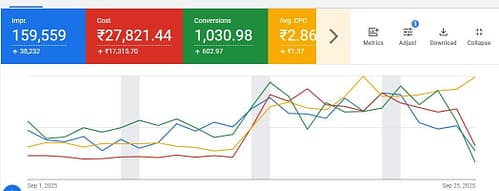Table of Contents
ToggleThe Instagram Algorithm in 2025
Instagram has never been just a photo-sharing app—and in 2025, it’s evolved into a full-fledged discovery engine powered by complex algorithms. Whether you’re a content creator, small business, or digital marketer, understanding how Instagram’s algorithm works is no longer optional—it’s a growth necessity.
This guide isn’t just a rehash of outdated tips. You’re about to dive deep into the 2025 Instagram algorithm, with expert-level insights drawn from platform analysis, digital marketing campaigns, and behavioral science. By the end, you’ll have a full blueprint to outsmart the algorithm and build algorithm-proof visibility.
The Instagram Ecosystem in 2025
Instagram doesn’t use a single algorithm. It uses separate systems for each format: Feed, Stories, Reels, Explore, and Search. Each is optimized for different user goals—personal connection, content discovery, indulge consumption, or interest exploration.
Feed: Prioritizes content from people you follow and interact with often.
Stories: Driven by recency and relationships.
Reels: Prioritizes content that hooks new audiences through engagement velocity.
Explore: Curates content based on visual and topical patterns.
Search: Keyword-indexed discovery engine (yes, even hashtags and alt text matter now).
Understanding how each system behaves gives you strategic clarity in your content design.
Core Ranking Signals in the Algorithm
At the heart of every decision the Instagram algorithm makes are these key signals:
Engagement Depth: Saves > Comments > Shares > Likes > Views.
Recency: Timely posts matter more, especially for Feed and Stories.
User Relationships: More interactions = stronger signal = higher placement.
Content Type Relevance: Reels to Reel lovers, Carousels to readers, etc.
Behavioral History: The platform “learns” your taste and feeds content accordingly.
Feed & Stories Algorithm Deep Dive
In the Feed and Stories, Instagram prioritizes closeness and recency. It looks at:
Who you message the most
Whose stories you watch daily
Whose posts you comment on
The last 15 accounts you interacted with
For brands, this means: your content must generate replies, shares, and DMs. Mere likes don’t cut it anymore.
Stories also favor consistency. Posting daily—even if simple—trains the algorithm to trust your content rhythm.
Reels & Explore Algorithm Deep Dive
These are the discovery engines of Instagram. Their mission is to help users find new creators they’re likely to love.
Key Ranking Factors:
Watch Time: If your reel is watched to completion (or looped), that’s gold.
Replays & Shares: These signal virality.
Trend Alignment: Using trending audio, hooks, and cuts boosts visibility.
Text-on-screen & Captions: Helps with accessibility and SEO.
Viewer Behavior: If similar users engage with similar content, your Reel gets promoted.
Explore, in particular, uses interest clusters to group similar users. If you make high-quality content consistently around a niche, you train the system to recognize your topical authority.
Algorithm Updates & Changes in 2025
Instagram’s algorithm in 2025 reflects a shift toward quality, intent, and connection.
Time Spent per Post now affects ranking more than ever.
Algorithm punishes engagement bait or AI-generated spam.
Content that elicits meaningful replies or taps into curiosity is favored.
AI detection is used to flag overly templated or low-quality Reels.
The platform is more transparent now, rewarding creators who foster real connection.
How to Work With the Algorithm
You can’t hack the algorithm. But you can train it.
Design for retention: Hook viewers in the first 3 seconds. End with a punch.
DM Triggers: Use story polls, quizzes, and Q&A to spark replies.
Native SEO: Add keywords in alt-text, captions, and subtitles.
Embrace new features: Every time Instagram launches something, use it.
Consistency + Interaction = Distribution Leverage.
Write for SEOBABABOLA Free Guest Post Opportunity!
Are you passionate about digital marketing, SEO, PPC, or content strategy? I’m now accepting free guest post submissions on SEOBABABOLA.COM!
This is a great chance to:
✅ Share your expertise with a growing audience
✅ Build your personal brand and authority
✅ Get a do-follow backlink to your website or portfolio
✅ Connect with like-minded marketers and business owners
Topics Nikhil Sharma love
SEO, Google Ads, Facebook Ads, Content Marketing, Blogging Tips, AI Tools, Analytics, and more!
📝 Submission Guidelines:
Original and high-quality content (no AI-generated junk)
Minimum 800 words
Include a short author bio with a link
No spammy links or promotional content
💡 Ready to contribute?
Send your topic ideas or full post to WhatsApp or reach out via the Contact Page.
Let’s grow together 🚀
What NOT To Do (Algorithm Penalties)
Instagram actively suppresses:
Engagement Pods and fake comment farms
Repetitive Reels using the same format/audio repeatedly
Content with deceptive CTAs or clickbait captions
Bots, automated scheduling tools not Meta-approved
Excessive AI-generated content with no personalization
Quality and trustworthiness are non-negotiable in 2025.
Algorithm-Proof Content Strategy
To future-proof your growth:
Build multiple touchpoints: Feed, Reels, Stories, Carousels.
Foster comments & DMs: These signal real relationships.
Create “save-worthy” content: Think infographics, mini-guides, trend insights.
Tell stories that spark emotion or curiosity.
The algorithm isn’t the enemy—it’s a mirror of what your audience values.
Lessons From The Trenches (Expert POV)
(MWN Corp campaign example goes here)
From testing over 500 Reels and 150 Carousels, we found that engagement velocity in the first 60 minutes determines your Reel’s breakout potential. The best-performing content was often conversation-driven, not trend-driven.
Real conversations → better relationships → better algorithm signals → exponential reach.
Q1: Does Instagram still use hashtags for ranking in 2025?
Yes, but less so. Captions, alt-text, and viewer behavior have more weight.
Q2: How often should I post to train the algorithm?
Consistency matters more than frequency. Minimum 3x a week across formats.
Q3: Are Reels more important than Feed posts?
For reach, yes. But for relationship-building, Carousels and Stories matter too.
Q4: Can AI-generated content hurt my visibility?
If it lacks originality or feels spammy—absolutely yes.
Interested in Working with Us?
If you’re looking for dedicated experts to help grow your business through effective SEO and PPC strategies, you’re just one click away. At MWN CORPORATION, we tailor our approach to fit your unique needs, ensuring every campaign drives real results. Let’s work together to achieve your marketing goals with clarity and confidence.

Final Thoughts: Not A Barrier
Understanding the Instagram algorithm in 2025 means understanding human behavior. When your content creates value, encourages interaction, and stays consistent, the algorithm becomes your best amplifier not your biggest barrier.
ALSO CHECK THE BEST TIME TO POST ON INSTAGRAM







1 Comment
[…] ALSO CHECK THE Instagram Algorithm in 2025 […]